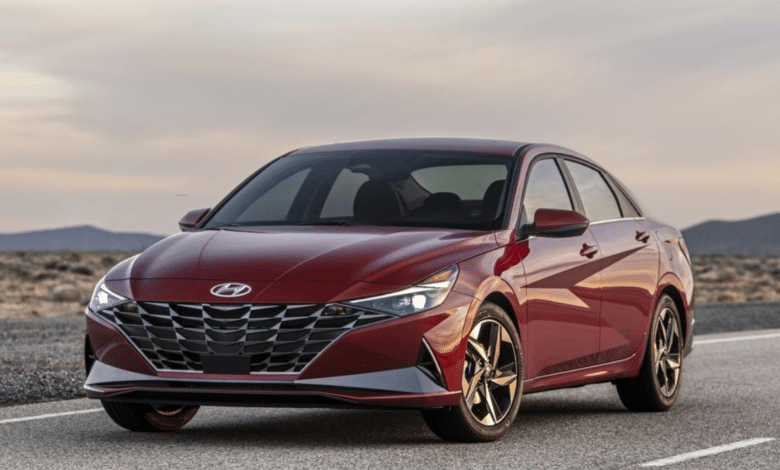
Hyundai Elantra: The simple small sedan, which millions of Americans continue to spend their hard-earned money on, has been overshadowed by America’s love for SUVs and EVs, or electric SUVs. There are fewer around, but Hyundai hasn’t forgotten and turned its tiny stalwart into a true all-star. At the same time, manufacturers like Ford and General Motors have opted to abandon inexpensive little cars and their supporters. The Elantra from the South Korean carmaker has the most options of any compact sedan and is an appealing alternative to the more well-known Honda Civic or Toyota Corolla.
The Elantra’s angular design and a large-mouthed grille that has prompted snide “catfish” analogies have garnered criticism from certain commentators who believe that “style” is subjective. However, the Hyundai usually seems more attractive in person than in pictures, so we advise a thorough examination. If you don’t mind the edgy exterior, the Elantra’s extensive lineup also appeals to those who are price-conscious (base SE and SEL models), frugal with their gas (Hybrid Blue and Hybrid Limited versions), and performance-obsessed (201 horsepower N-Line and a downright terrifying 276 horsepower Elantra N).
The 147-horsepower four-cylinder engine in base versions is mated to a continuously variable automatic gearbox (CVT). Customers won’t mistake those Elantras for a sportier, more opulent Mazda3, but the SE’s starting price of $22,065 is lower than most rivals. Even though the SEL seems well worth its $23,315 MSRP, even that variant is well-equipped. Starting with the $25,665 Hybrid Blue, hybrid vehicles hit the sweet spot regarding features, cost, and performance. The Blue returns between 48 and 50 mpg, which is still outstanding but can’t always match its 54 combined mpg rating from the EPA.
An Elantra N-Line with a 201-hp turbo four and a seven-speed dual-clutch automatic gearbox quickens the pace. With the lauded new Elantra N, whose 276 horsepower turbo four hustles this overachiever from zero to 60 mph in 5.1 seconds and even provides a 10-hp boost option, the speed becomes dazzling. The N-Line no longer provides a manual gearbox, while the N still does. The Elantra, except the N, isn’t as exciting to drive as the Honda or Mazda, but it’s still better than the Corolla and Volkswagen Jetta.
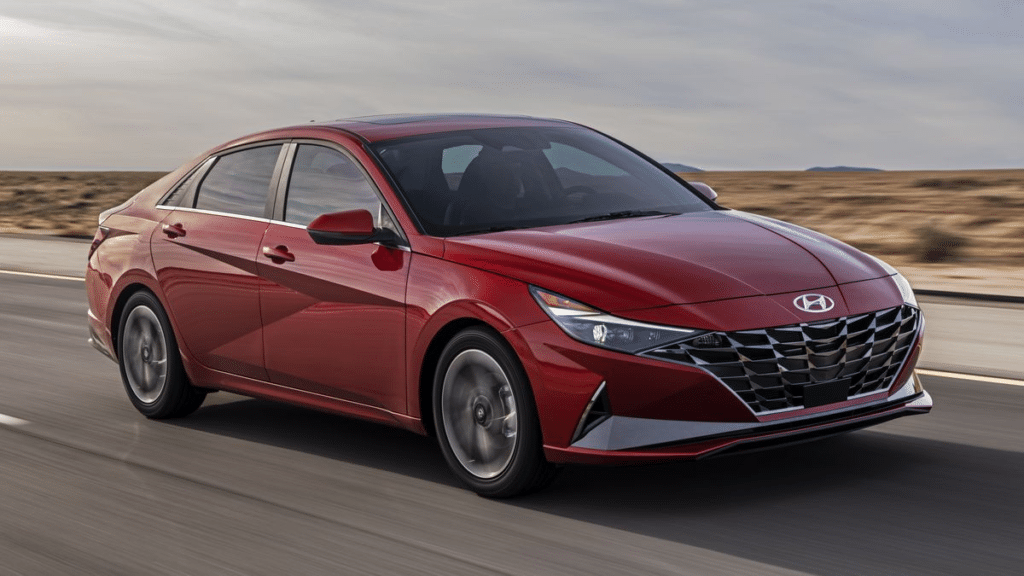
Like the Civic, every Elantra has a spacious cabin that seems nearly “midsize” in terms of usable space. Despite a reasonably short trunk opening, the trunk provides a generous 14.2 cubic feet comparable to some bigger sedans. The sleek dashboard and row of covert, hidden vents give the interior a modern, welcoming air. Furthermore, the rear seat is enormous, offering more legroom than the bigger Sonata from Hyundai. The optional dual 10.2-inch displays on models also give them a particularly upmarket appearance. Information technology is expertly incorporated into Hyundai vehicles, with user-friendly touchscreen displays and simple navigation.
Even the base Elantra models from Hyundai have many active safety systems, but not as many as the Civic or Subaru Impreza. The Elantra no longer qualifies as a “Top Safety Pick” this year due to the stricter Insurance Institute for Highway Safety’s (IIHS) rules, but it still scores well. Only one rival (the Kia Forte) can match Hyundai’s extensive five-year, 60,000-mile bumper-to-bumper and ten-year, 100,000-mile powertrain warranties. The Elantra is a must-drive for buyers of compact sedans because of all this value.
Performance: Hyundai Elantra
Elantra grades from Hyundai’s extensive portfolio provide various performance options. Four powertrains, including the N, each have a distinct personality.
With a 2.0-litre four-cylinder engine producing 147 horsepower and 132 lb-ft of torque and driving the front wheels via a CVT, the base SE, SEL, and Limited variants do the job—and nothing more. The basic Kia Forte also uses this engine, and both of these budget-friendly vehicles perform well for what they are. It takes around 8.0 seconds to get from 0 to 60 mph. The basic Elantras are great for anyone searching for inexpensive transportation since they are neither very fast nor particularly sluggish, and they are not a cheap penalty box.
A 1.6-liter turbocharged four and an electric motor are paired in hybrid variants to provide 139 horsepower. Still, they also offer a significant increase in torque over the regular 2.0-litre engine with 195 lb-ft combined. Unlike other hybrids, which often employ CVTs, hybrids also feature a six-speed dual-clutch automatic gearbox shared with N-Line models. This results in substantially improved fuel efficiency and quicker reactions than the standard versions.
Power-hungry individuals will insist on the N-Line’s 1.6-litre turbo-four with 201 horsepower and 195 lb-ft of torque, which gives the Elantra a notably more agile and assured feel. The non-N Elantras drive rather well, and most drivers who aren’t performance specialists will be happy with their ride and handling. However, they don’t have the same lightness of feeling as the Civic Touring or Si or necessarily have the same level of engagement as the Mazda3 S. There is also the N for those seeking authentic thrills.
The Elantra N’s 276 horsepower and 289 lb-ft turbo four gets 286 horsepower thanks to a turbo over-boost feature named “N Grin Shift.” The Elantra N has an eight-speed automatic or a six-speed manual shifter, which is becoming less common in any class. Despite its modest power, the Elantra N excels because of its sharp steering, delicate brakes, and clinging suspension. It costs substantially less than any BMW M3 or Honda Civic Type R and much less than the new Toyota GR Corolla, even though it is every bit a sports sedan in the BMW M or Honda Type R mode.
Fuel efficiency: Hyundai Elantra
The EPA rates the Elantra’s standard 2.0-litre engine with up to 37 mpg combined (33 cities, 42 highways). However, most models only get 34 mpg combined. The lighter, basic versions get the higher score, which is the highest in its class for base models, while the more fully equipped ones are on par with the Volkswagen and Honda cars that are the most cost-effective. Strangely, they outperform the base Forte with the same engine. This is most likely a result of the Elantra’s stronger aerodynamics.
The Elantra Hybrid, however, is the standout in terms of economy. Although the standard 2.0 model isn’t a slouch either, it has among the highest fuel efficiency in the market. According to the EPA, the extra-efficient Hybrid Blue gets 54 mpg combined (53 city, 56 highway) compared to the standard hybrid’s four mpg loss in each category. The Blue’s EPA rating is a touch optimistic for real-world driving, but you can count on getting consistently 48 to 51 mpg out of it every day, which is still the highest in class, and the Toyota Corolla hybrid’s top rating. Honda will introduce a Civic Hybrid in 2024. However, it is not yet available.
For their more power, N-line Elantras provide 31 mpg combined (28 city, 36 highway), which is pretty good. That compares well to the mid-range Mazdas and the Volkswagen Jetta GLI and is on par with some sportier Civics. Unsurprisingly, the Elantra N performs far worse, combining 25 mpg with the automatic and just 23 mpg with the manual. That’s somewhat poorer than the Mazda3 Turbo. Still, the N is quicker than that vehicle and has comparable fuel efficiency to Civic Type R. Most significantly, the N only accepts premium.
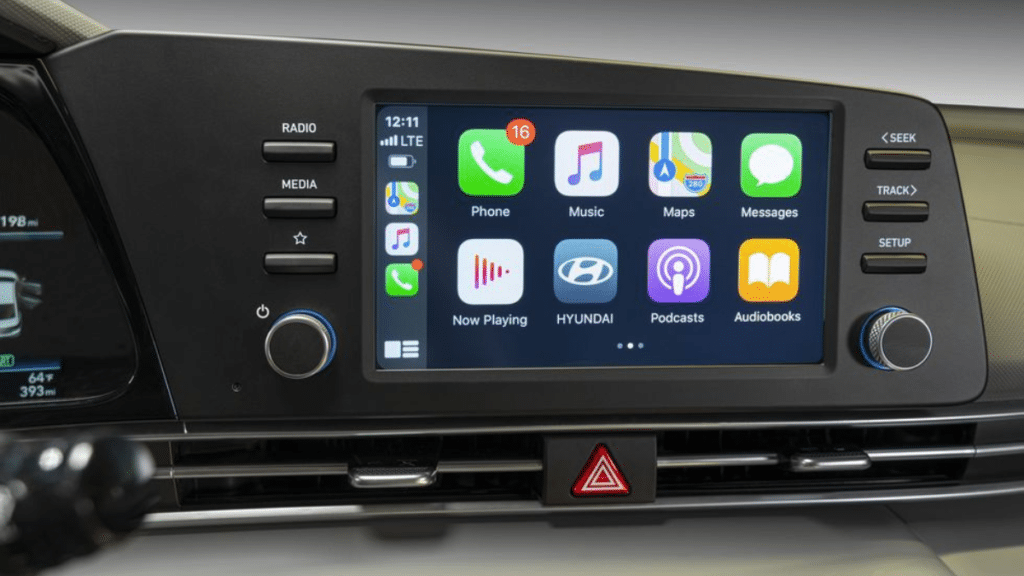
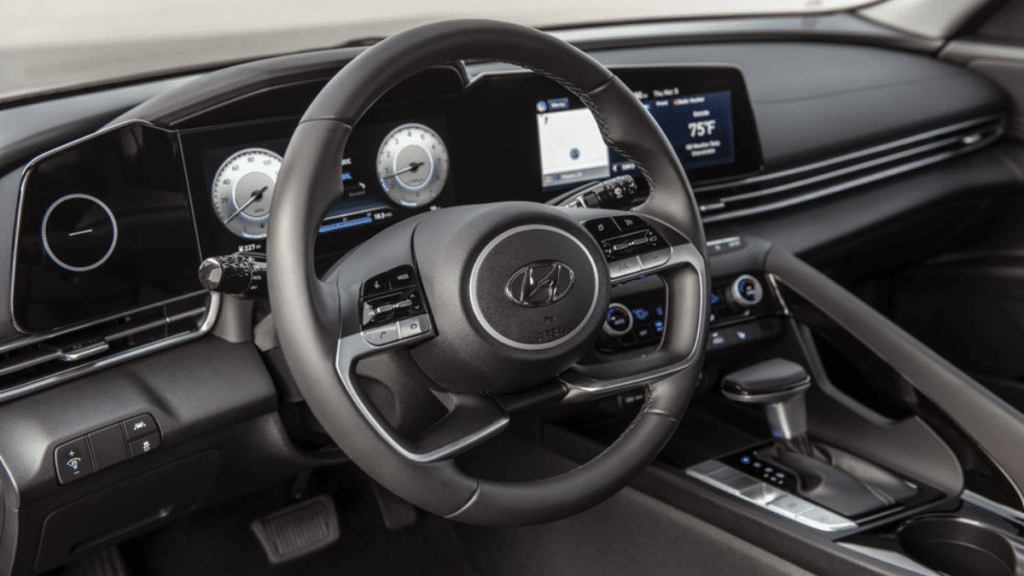
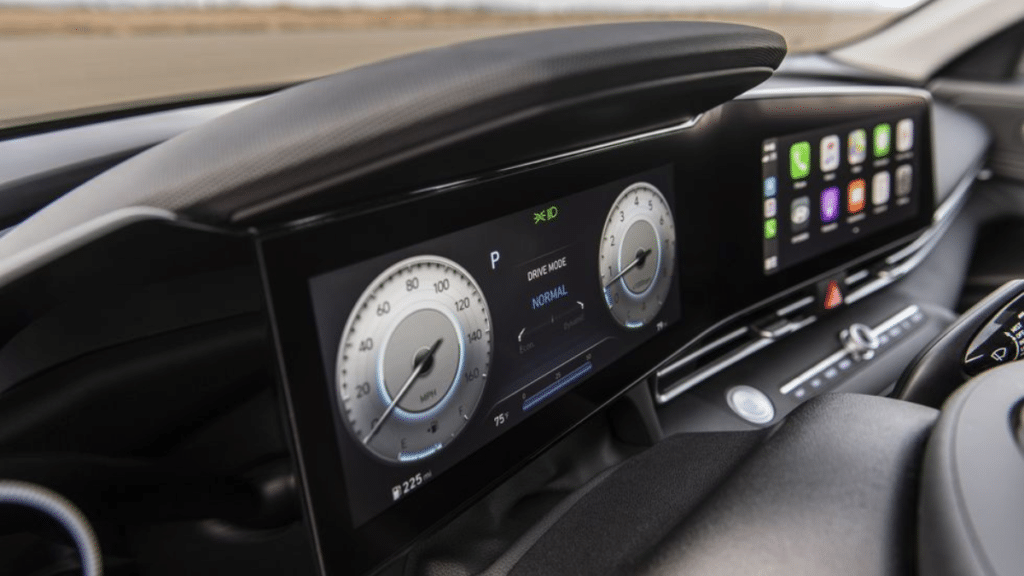
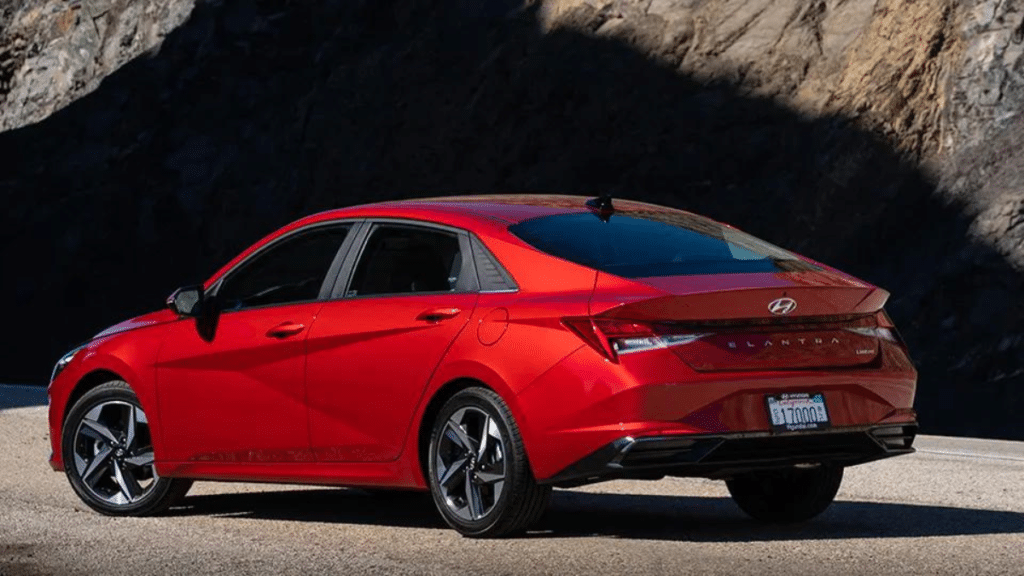
Safety & Driver Support
Forward collision warning with automatic emergency braking and pedestrian detection, blind-spot monitor and assist, rear cross-traffic alert and assist, lane-keep and lane-follow assist, safe-exit assist, high-beam assist, and a driver alertness monitor are just a few of the impressive standard safety features. The N-Line and N models cannot be ordered with adaptive cruise control. Therefore, you must upgrade to a higher trim to acquire it. Adaptive cruise is one of the more typical features of Honda and Subaru, but the Elantra is still well-equipped by class standards.
The National Highway Traffic Safety Administration (NHTSA) awards Elantra a five-star overall collision protection rating and a four-star front-occupant protection rating. It was an IIHS “Top Safety Pick” in 2022, but because that organization’s criteria for 2023 have tightened, the Elantra hasn’t yet achieved that distinction this year.
Comfort and Space
The Elantra has a roomy interior with a total internal volume of 99.4 cubic feet, comfortably accommodating up to five persons in a pinch. The Hyundai has an astonishingly well-built feel and rides quietly and smoothly. The headroom measurements are 40.6 inches in the front and 37.3 inches in the back. The best-in-class legroom is 42.3 inches in the front and 38 inches in the rear. Surprisingly, this vehicle has more legroom than Hyundai’s midsize Sonata.
The rear seats are a little flat and unattractive compared to the front, which is well-curved and beautiful. Nevertheless, they are comfy, especially if two people are in the rear. The smooth ride of the automobile makes everything easier. Large kid seats and school drop-off duties are also made possible by the large rear doors and aft cabin.
Infotainment: Hyundai Elantra
The base SE model has wireless Apple Car Play and Android Auto, uncommon in entry-model sedans, a standard 8-inch centre touchscreen, analogue driver’s gauges, and wireless connectivity. However, the SEL is still a wiser purchase since it comes with Hyundai’s Bluelink-linked services, dual-zone temperature control, and standard remote keyless entry with a push-button start. The SEL Convenience package ups the ante with features like heated front seats, mirrors, a wireless charging pad, a leather-wrapped steering wheel and shifter, and more.
In addition, a stylish, connected pair of 10.3-inch panels with a touchscreen for navigation is included in the optional package. Those displays significantly improve Elantra’s upmarket interior atmosphere. Additional features, including leather interior, Bose premium audio, and the app-based Hyundai Digital Key, are added to limited variants. Like the majority of Hyundai vehicles, everything is simple to use and has switches that seem high-quality.
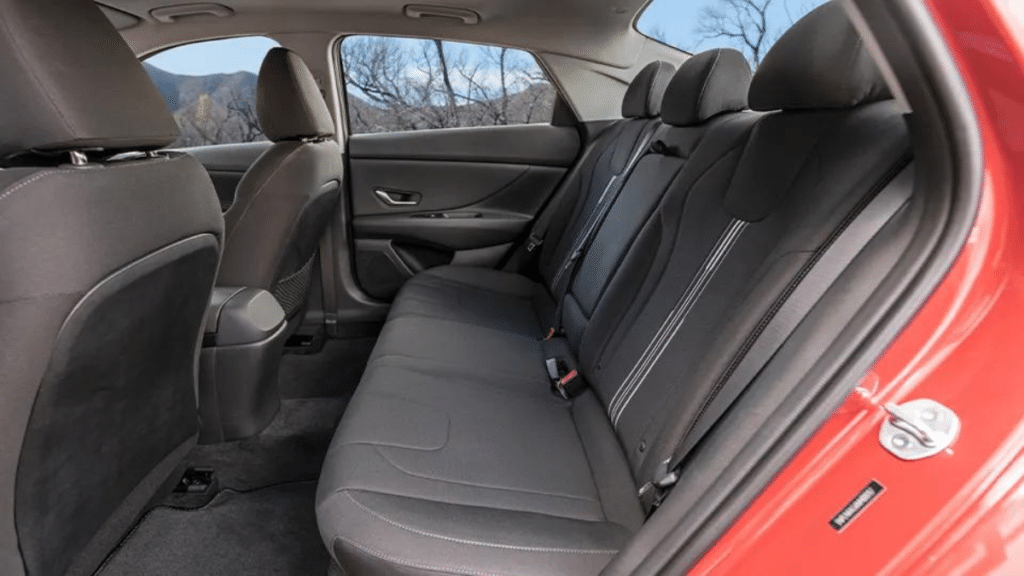
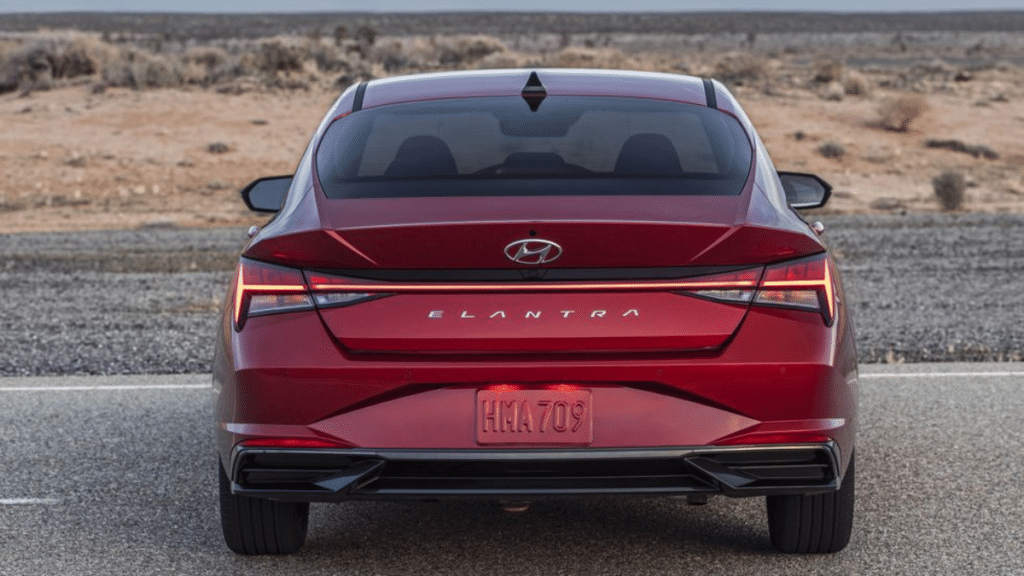

Storage & Cargo Space:
The Elantra’s 14.2 cubic-foot trunk is more significant than usual for its class and is not far from the Civic sedan’s 14.8 cubic-foot standard. The aperture of the trunk is large yet relatively shallow. Hyundai was the first to provide connections in this convenient place, and the interior storage space features a tiny cubby forward of the shifter that is outfitted with two USB ports and a 12-volt outlet. Although the glovebox and centre console are spacious, the front door pockets are skinny. The Elantra’s lack of a hatchback, unlike Honda and Subaru, which have much bigger luggage spaces if you pick that body type, is the only thing holding it back in this class.
Styling: Hyundai Elantra
The eye-catching appearance of the Elantra may not be to everyone’s taste. However, the Elantra has a more excellent and coherent appearance in person compared to photos. Give Hyundai credit as well: With its angular coupe-style design, wraparound headlights, and a webbed grille that may be the creation of Spiderman in his black-suited form, the Elantra, unlike many compact sedans, is never dull to look at.
The Elantra’s interior is more traditional. The Hyundai appears sensibly constructed for the price, with a cool-cockpit atmosphere and appealing, modern dashboard, despite some harsh plastics here and there that are similar to other vehicles in this class, except for the luxury Mazda3. The Elantra N comes with a sporty red outside rim, aggressive sport seats with stitched leather upholstery and fake suede inserts, metal paddle shifters, N-badging, and more if you want to go all out.
The Hyundai Elantra 2023: Is It Worth It?
The Elantra is unquestionably worthwhile, with so many amenities at a low cost. However, since there are so many buyers, the “best value” of the group may imply various things to different purchasers.
Except for the Forte and Jetta, the Elantra SE’s starting price of $22,065 undercuts most rivals. However, if you’re looking for a budget-friendly Elantra, the somewhat better-equipped $23,315 SEL provides a significant equipment bump for not much more. In addition to having more amenities than the standard Jetta and the more expensive Toyota Corolla LE, this model is also not awful to drive. Although Honda and Subaru cost $900 to $1,600 more to start, they both have more standard amenities than the Elantra SEL.
The $26,665 Blue is the most excellent option if fuel efficiency is your primary goal, and it also has better performance than the SE and SEL. No other car in its class can equal its economy or internal spaciousness, and it drives far better than the hybrid Corolla.
The Limited Hybrid ($30,265) is the most opulent Elantra, while the N-Line ($28,615) offers additional amenities, power, and visual updates. Even if the price disparities are less, they still undercut their rivals.
The Elantra N is undoubtedly the most terrific deal for performance enthusiasts, beginning at $34,400 (excluding destination costs). The Elantra N outperforms the Mazda3 Turbo and Honda Civic Si in terms of performance and other factors while offering enthusiasts a manual gearbox ($32,900 starting price). Its performance is entirely out of line with the cost and is $10,000 less expensive than the Volkswagen Golf R and Honda Civic Type R. Even the Toyota GR Corolla is more costly to start and less convenient to use as a daily car. There are just no greater values than that.


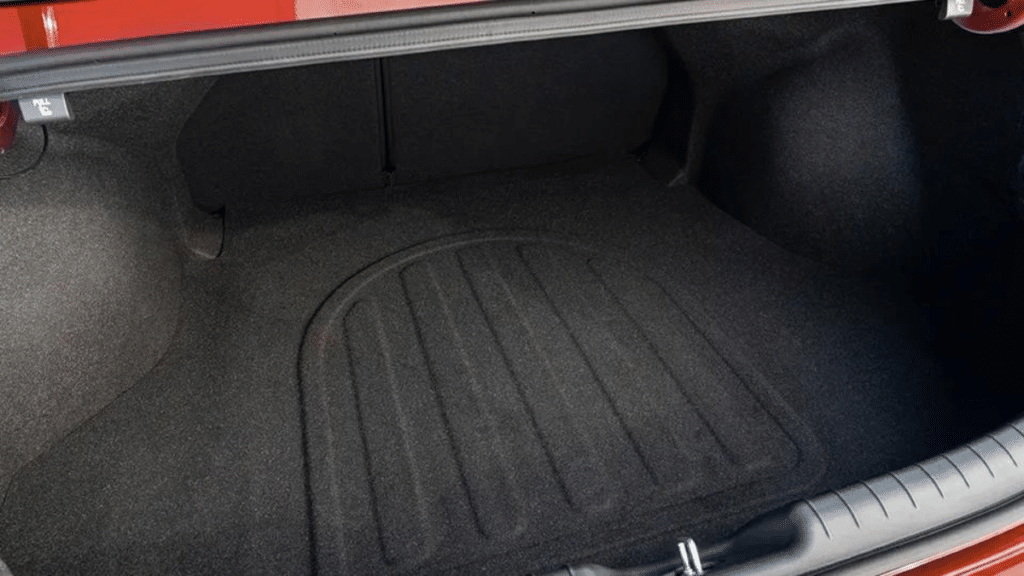

How Much Will Insurance for a 2023 Hyundai Elantra Cost?
Although it is not expensive to insure, the 2023 Hyundai Elantra costs slightly more than its rivals. An average yearly premium for a 30-year-old female driver with a clean record is $2,299, albeit this figure covers all 50 states. Comparatively, the Mazda3, the Nissan Sentra, the Volkswagen Jetta, the Mazda3, and the Honda Civic cost $2,079, $2,169, $2,180, and $2,093, respectively. Visit our auto insurance calculator for a more precise idea of your possible insurance costs.
Verdict
The Elantra does everything well and is a good bargain but doesn’t excel in any area. In many respects, including rear seat space and fuel efficiency, the Elantra is at or near the top of its class. There are many standard amenities and driver-assistance technologies in its overachieving cabin. Additionally, buyers can access various models, including the fuel-efficient hybrid and the standout Elantra N, which could be the market’s most economical compact performance vehicle.
Hyundai Elantra Generations
Seventh Generation
2021 to Present
For the 2021 model year, Hyundai unveiled an entirely redesigned Elantra with a larger wheelbase, broader stance, and a lower roofline. A new hybrid engine and a performance-focused N-Line were added to the range. The 2.0-litre four-cylinder engine in the 2017 Elantra produces 201 horsepower and 132 pound-feet of torque. The hybrid’s 1.6-litre engine and 32 kW electric motor have 139 horsepower and as much as 195 pound-feet of torque. In addition to a host of standard driver-assistance safety features, including automated emergency braking, lane-keeping assistance, automatic high lights, and a driver attentiveness warning system, Hyundai incorporated wireless Apple CarPlay and Android Auto compatibility. The Elantra N, a 286-horsepower, track-tuned, specialized performance variant in the style of the Veloster N, was introduced by the Korean carmaker in 2022. The N-Line’s available manual gearbox will be removed in 2023, leaving just a seven-speed dual-clutch automatic. However, the N still has a clutch.
Sixth Generation
2017 to 2020
Surprisingly, Hyundai updated the Elantra’s appearance for the 2019 model year after introducing one of its most appealing automobiles with the 2017 model. For 2020, the basic model’s manual gearbox was discontinued.
Fifth Generation
2011 to 2016
The lengthier Elantra substantially advances with a newly contoured and athletic external appearance. The outdated 2.0-litre engine gets replaced with a new 1.8-litre one that generates 148 horsepower and 131 pound-feet of torque. It may be paired with either a six-speed manual or automatic gearbox.
Fourth Generation
2007 to 2010
The 2007 Elantra was unveiled by Hyundai at the New York Auto Show in 2006. 2009 is the first year for the Elantra Touring hatchback, with a sport suspension and a 2.0-liter four-cylinder engine. A redesigned 2010 Elantra’s standout feature is an optional navigation system made by LG that has Bluetooth connection and point-of-interest mapping.
Third Generation
2001 to 2006
A new Elantra has a longer wheelbase and a sleek appearance. It boasts a brand-new 2.0-litre four-cylinder engine with 140 horsepower. Side airbags, air conditioning, and Michelin tires are among the long list of impressive standard amenities. In 2001, Hyundai also released the Elantra GT hatchback. For 2003, the Elantra had an update that included a new grille, hood, and instrument panel.
Second Generation
1996 to 2000
Hyundai adds a new sedan and a new wagon to the Elantra lineup, the first wagon ever made by the company.
First Generation
1992 to 1995
Hyundai initially positioned the Elantra as a four-door hatchback between the Excel and Sonata. The outward styling was softened by Hyundai in 1994, and new features, including a driver-side airbag and a four-channel anti-lock braking system, were also introduced.




